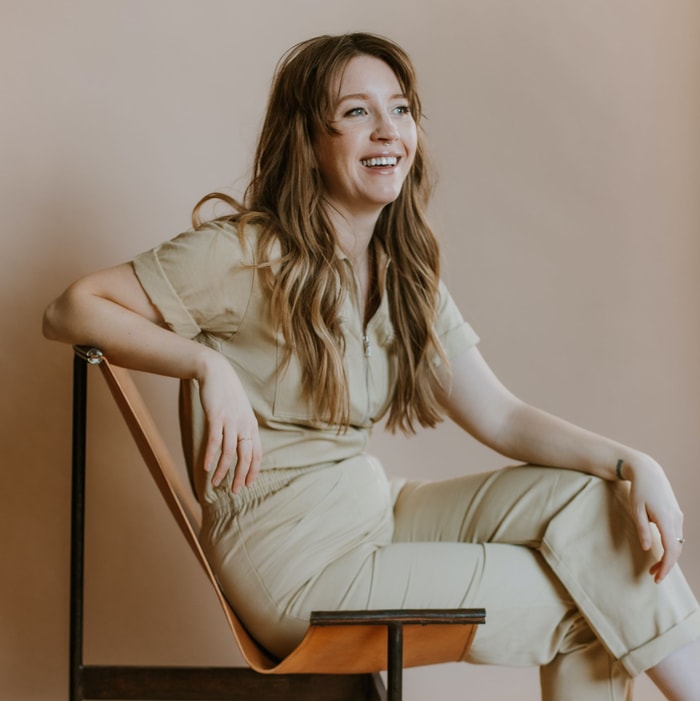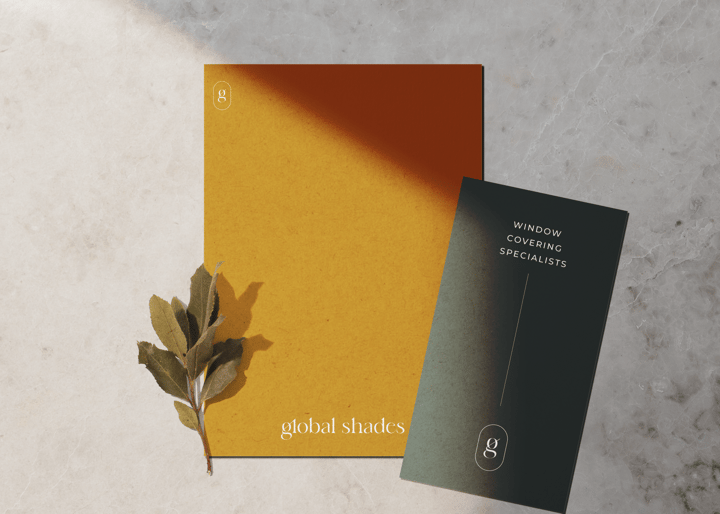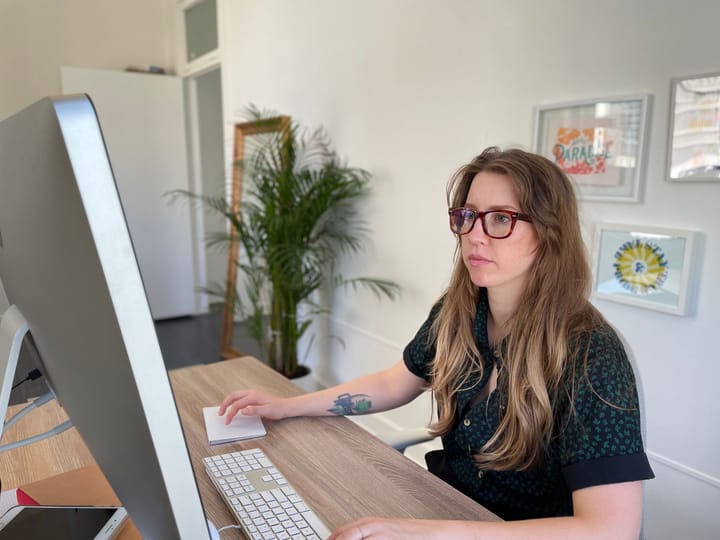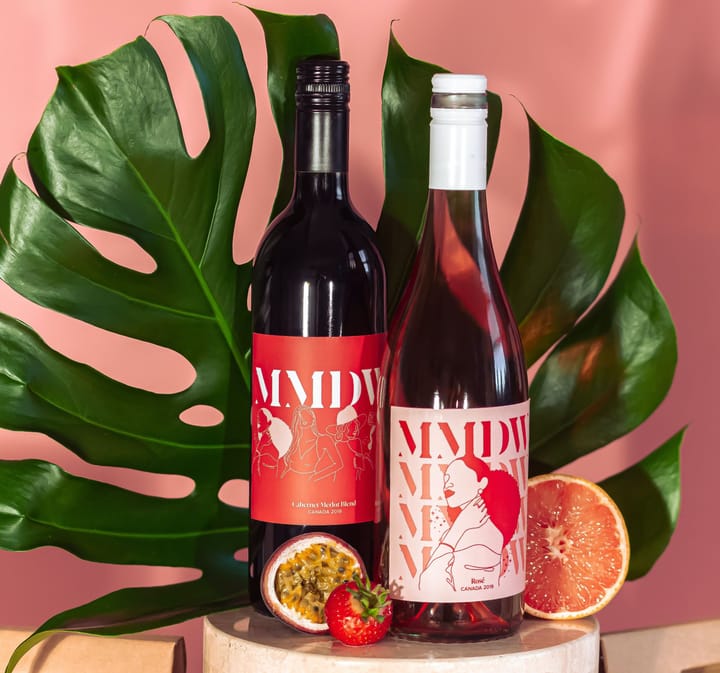
How to Run a Branding Agency That Your Clients Will Love with Grant Design
Ever wondered what it would take to run your own branding agency? Aislinn Grant, founder of Grant Design, is here to tell the tale!
By Yara El Siwi — 16 June, 2021

Hi Creative Community,
I’m Aislinn Grant, and I’m a designer hailing from Calgary, Alberta. I’m obsessed with all things print, literally any dog, and entrepreneurship. After working in the creative industry for 4 or 5 years, in 2018 I founded Grant Design, a studio that specializes in branding, packaging and print.
Grant Design typically caters to businesses that are just starting out or more established ones that are wanting rebrands to level up. We work with a lot of cool humans in the e-commerce space, usually within the wellness sphere, and have also worked in interiors and architecture. Recently we’ve been taking on a few restaurants, too. Working in hospitality is really exciting for us, because it means we get to work along with interior designers to make sure the brand is translated in the space. Collaborating with different creatives and other folks who care about design is so revitalising!
If I were to describe the Grant style, I’d say that we’re typeface-focused and opt for bold-but-clean design. We always start with selecting our favorite typeface options because this very much informs everything else we design. If the typeface isn’t right, nothing else works, so I spend the majority of my time seeking, tweaking, and testing typefaces to find something unique that perfectly represents the brand we are working with. Once we’ve got that down, we work on building out supporting graphics, patterns and illustrations that align with our client’s target audience and what they wish to be perceived as (i.e. whimsical, wild, polished, etc.).

From Aislinn to Grant Design
I’d always been quite entrepreneurial, so while I was studying business at University I started playing around with different ideas to gauge what I liked. I was juggling too many things and probably doing them all at a subpar level, but I eventually pitched my bath bomb business at a competition in Calgary and won $7500. I ended up spending most of it to hire an agency to rebrand my business and design my packaging. I remember sitting in the boardroom with their team and thinking “is this an actual job people can have?” I loved the process so much that I started teaching myself how to design.
The first freelance job I landed, I was hooked! I woke up at 6am excited to work, and that was a new feeling for me. The next thing I knew it was 10pm and I’d barely blinked. It wasn’t long after that, that I quit everything else (other than finishing my degree) to pursue design. I had the great fortune of working under a very talented designer for several years, so I learned a ton in a short amount of time. By the time I started my own firm I knew the ropes and could hit the ground running.

For me, finding success in this line of work has meant really digging into the process of design and making it easy and fun for clients to work with us. Being a good designer is just a piece of the puzzle. You can be a fabulous creative, but if you can’t deliver on time and thereby delay the launch of a business, you could be greatly impacting its success. If you have the most creative ideas but don’t know how to communicate them, you might as well just chuck them. Equally, if you’re unable to build a positive relationship with your clients, they’re more likely to find aspects they don’t like about your work and you’ll end up doing revision after revision.
What sets Grant Design apart is that we’re genuinely excited and enthusiastic about our clients’ businesses and care about giving them results they’ll be thrilled with. In other words, we’re great to work with! I believe that making sure the client enjoys the experience is absolutely key. That said, we make sure we direct the process. We don’t let clients dictate to us because we’ve done this many, many times (while it’s likely their first time) so we know what will produce a good result.

Rapid Fire Q&A 🔥
What's your favourite...
… way to start the day? Looking at beautiful print samples.
… design tool? Coolors or procreate
… source of inspiration? Real, tactile, IRL designs.
… colour? Red, because it’s bold and classic.
… design hero or person you aspire to? I love Draplin’s candor. He’s been a big inspiration when it comes to speaking events I’ve done, as far as being myself and letting my swear-like-a-sailor self show up!
… productivity hack? Pomodoro Timer Technique (except I do 1 hour, 10-minute break stints)
… client wrangling tip? Put a lot of work into proposals. I include an “ideas” page where I spend some time thinking of cool design projects that we could do in the future and then I pitch that proposal IRL.
… piece of advice you've received? Stop spreading yourself thin across too many things. Stay focused on the things that matter.
… brand identity or design by another business? I love 88 Brewing’s branding by Bamff Studio. Freaking stunning.

What great branding looks like
Great branding is something that humans connect with before even knowing why it speaks to them. It makes them feel a certain way, and that feeling is reinforced by every interaction they have with a brand. I would also argue that good branding has unexpected and surprising elements, otherwise the result is that people feel neutral about it.
Bad branding exists, unfortunately, and it doesn’t necessarily mean it’s ugly. To me bad branding usually looks generic, or like someone didn’t dig deep enough.
Our philosophy is to design things with meaning and that will help our clients succeed. To achieve that, it’s crucial to establish a personal connection to the founder of the business. Otherwise, it’s just pretty work they’re bound to get bored of at some point. We do a lot of discovery and workshopping with people to explore what makes them unique, what makes their story captivating, and what’s cool about their trajectory. When we pitch concepts we bring everything back to this, and our clients really like that we listen.
The top 3 mistakes to avoid when working on a branding project:
1. Don’t skip the homework.
Once you’ve landed a project you like, don’t start designing straight away. First, take a careful look at the competitors, mainly to make sure you don’t create something similar by accident, research the industry and consider your client’s wider goals.
2. Don’t abandon your first idea
A half-cooked idea doesn’t mean it’s a bad idea, and your first instinct is usually the best. Stick with it and build it out. If later you don’t think it belongs in your final options, ditch it.
3. Don’t jump right into illustrator
Ready to start concepting? Sketch. In real life. Write down all of the messaging ideas that come into your brain, sketch out all of your logos ideas, and don’t judge anything that comes out. Let it flow. You’ll save hours and hours by doing this.

Building meaningful relationships with your clients
As a rule of thumb, don’t take on projects that you’re not wildly enthusiastic about or clients that you’re not fully in sync with. For our practice, we developed a “Hard No List”, which is essentially a collection of red flags to look out for in the first couple of interactions. It’s saved us a ton of headaches! Check it out here if you need some no-spiration.
That said, don’t fall into the trap of treating your clients like your enemies. There’s something strange that happens to designers when they’ve worked in the industry for too long, which is this “I’d love my job if it weren’t for the clients” stance. I understand how people get there, but I think this can be circumvented by:
- Saying no to people that hit too many points on the Hard No List (see above).
- Setting solid boundaries. Decide on a specific period of time in the day for calls/meetings/emails and don’t respond or schedule meetings outside of that.
- Only working on projects you are excited by. If you’re miserable working on something it’s either because you don’t jive with the client (see point one), you aren’t excited by the type of project (then stop doing that type of project), or you may not actually want to be in this line of work.
- Preventing burnout. Charge more, take on less, take vacations, and find ways to get excited about design again.

My advice to young creatives
Looking back at my own journey, here are some recommendations for creative souls at the beginning of their careers:
Own your title
People can’t recommend you or pass your contacts along, if they don’t know you are a designer. Even if you feel like you’re not where you want to be on a skill level, shout your new profession from the rooftops.
Give yourself time to evaluate
In the beginning you’ll probably say yes to most of what lands in your inbox, which is pretty normal. The most important thing is to keep track of what you liked and didn’t like and then start saying no to projects you don’t enjoy. If you don’t like PowerPoint, but love designing logos, position yourself as a logo designer. Land on what you enjoy doing and get really, really good at it.
Get really good at proposals
Learn what a good proposal looks like, and pitch to your client in person or on Zoom. Never, ever send a proposal as a PDF in an email without going over it with them. Your conversion rate will dramatically increase.
Develop your skills
Take Fridays for no-client-work days, and continue building your skills (sign up for courses, do workshops, follow tutorials, etc.). I did many, many skillshare classes on Fridays in the early days.
Create great mock-ups
Invest in some good, realistic mockups for your portfolio. I get a lot of mockups from Creative Market and Moyo Studio also sells some beauties. Make your work look real if you don’t have any physical work to take photos of.
Ask for feedback
Seek feedback from clients, leads that didn’t hire you, other designers, your accountants, etc. Identify problem areas and refine your processes to propel yourself towards the needed change.
Keep yourself excited!
After my first year of owning my own biz, I started feeling a little burnt out and was finding it hard to start the day. I learned a few tricks to keep myself motivated, like rereading the results of discovery meetings and browsing through beautiful books and prints in the morning. Whatever works for you, make sure to save yourself some time to keep the spark going!

To conclude, designing brands to inspire people has been the journey of a lifetime. It’s quite an honor to be a part of someone’s path! I know I’m in the right place because I’m still so excited to keep growing, and I can’t wait to continue learning from this community.
Cheers!
Aislinn
Wish to learn more about Grant Design? Visit their website, Instagram, Behance or Dribbble!
Are you a creative professional? Care to get featured in the Creative Buzz Series and impart some wisdom? Follow this link to brief us!